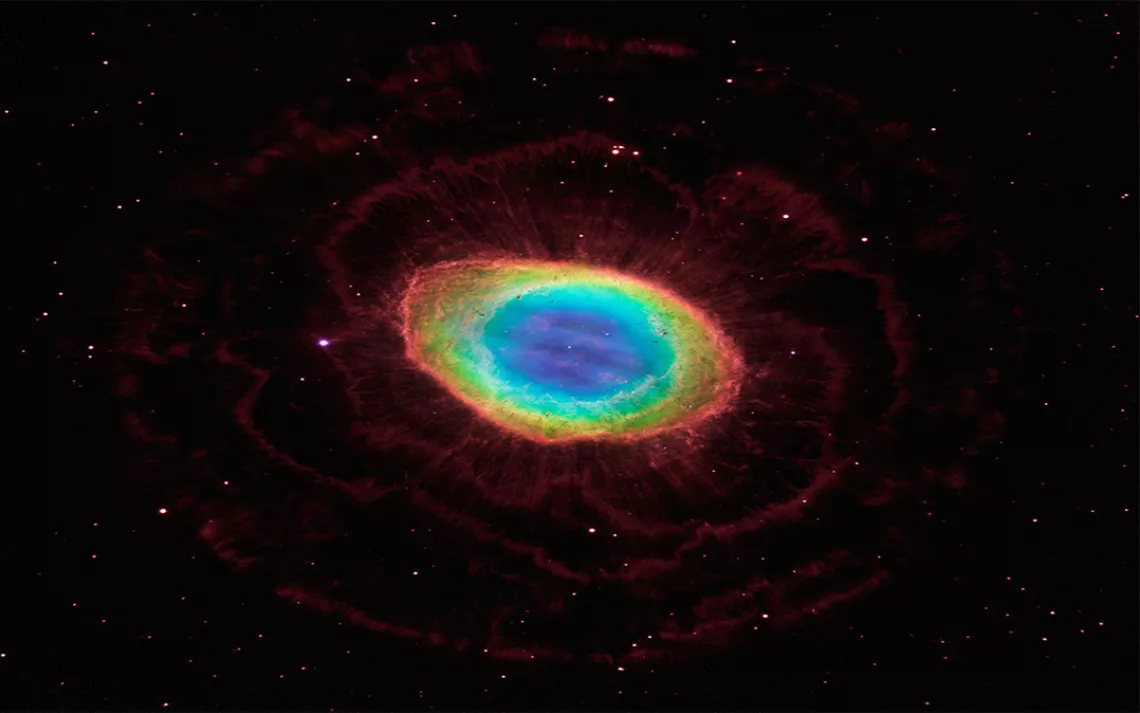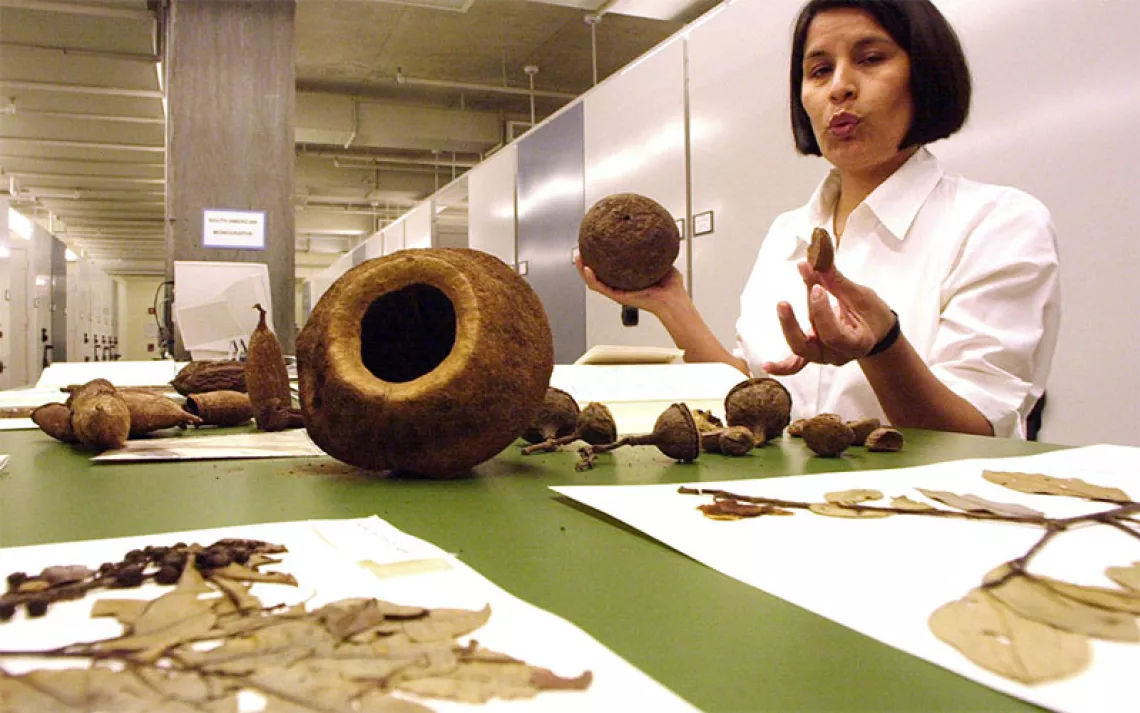June Observing Highlights: The Ring Nebula and Rare Electric-Blue Clouds
Darkness is elusive this month, but there are still interesting things to see up high

Photo courtesy of NASA, ESA, C.R. O'Dell (Vanderbilt University) and D. Thompson (Large Binocular Telescope Observatory)
This month, we enter peak daylight hours with the summer solstice on June 20. In some parts of the United States, days become so long that true darkness only occurs for a couple hours each night.
Even when the sun is below the horizon, some of the sun’s rays will still creep into our sky. There are three stages of twilight—civil, nautical, and astronomical—and only when astronomical twilight is over is the sky truly dark and all the dim stars visible. In Seattle, for example, real night lasts for less than two hours in June before twilight invades. On June 15, astronomical twilight won’t end in the sleepless city until 12:15 A.M., and it begins again by 2:04 A.M.
It may be harder to see the faint objects of the deep universe in summer, but the season brings the opportunity to see some rare electric-blue clouds. These are night-shining clouds high in the atmosphere that are illuminated by the already-set sun’s rays, which give them an iridescent glow. You are most likely to spot these noctilucent clouds during the month before and after the summer solstice.
With the onset of summer, the summer triangle is a popular object for star gazing. This triangle is made from three bright stars that reside in three different constellations. The brightest star, found nearly directly overhead, is Vega, in the constellation Lyra. It is often one of the first stars you’ll see when the sky gets dark.
Take some time to look at Vega’s constellation. The bright star has a parallelogram attached to it, which is the main portion of this relatively small constellation. Right between the bottom two stars in the parallelogram is the Ring Nebula, a magnitude-8.8 puff of gas that has been expelled from a dying star.
The Ring Nebula is a fun object to look at through binoculars or a telescope because it appears as a faint donut floating in the distant, far reaches of space. In 5 to 6 billion years, our sun will expand into a red giant and also release a gas shell, somewhat like the Ring Nebula, which will blow through our solar system.
As long as you have the binoculars or the telescope out and are gazing at Lyra, take a look at its stars, many of which are actually double stars. How many can you spot?
Even without an optical aid, there are plenty of interesting things to see in the sky on summer evenings. On June 3, Jupiter and the moon will be less than 2 degrees apart, and six days later the moon will have moved on to Saturn, making the duo less than 3 degrees apart. Saturn and the moon will be positioned in front of the Milky Way galaxy, not far from the galactic center. However, the Full Strawberry Moon is on June 9 and will wash out everything but the brightest objects in its environs.
On June 20, Venus and the moon will be close together in the sky before sunrise. June 27 will find the star Regulus and the moon about 1 degree apart. Then on June 30, Jupiter and the moon will be partnered up again after sunset.
 The Magazine of The Sierra Club
The Magazine of The Sierra Club



